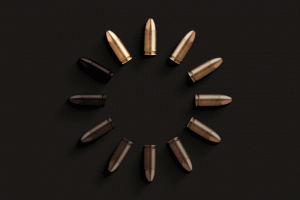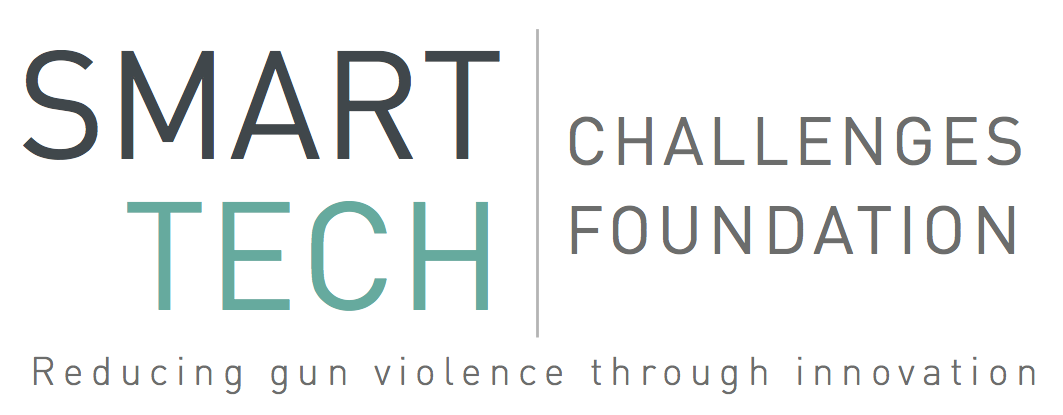Bulletproofing America
Written for the Atlantic by William Brennan.
Could technology help prevent mass shootings?

According to a recent poll by the Associated Press, 60 percent of Americans worry that they or a family member might die in a mass shooting. Statistically speaking, we’d do better to fret about septicemia and car accidents, but it’s not hard to find the source of the outsize concern: From 2000 to 2006, an average of six “active-shooter incidents” took place in the United States each year; in the following seven years, that number nearly tripled—with one occurring, on average, every three weeks.
One of the best ways to prevent mass shootings, experts say, is to regulate who can buy and use a gun. But Second Amendment advocates in Congress have thwarted even the most toothless gun-safety measures—and will almost certainly continue to do so under Donald Trump, who has vowed to block universal background checks, abolish restrictions on guns in schools, and oppose regulations on assault weapons.
With no political solution in sight, maybe it’s worth looking for a technological one. Private companies are working on advances in firearms and other technologies that might save lives. Here’s what those efforts look like.

1 | Remote-Control Guns
“If we can set it up so you can’t unlock your phone unless you’ve got the right fingerprint, why can’t we do the same thing for our guns?,” President Obama asked last January after the shooting in San Bernardino, California. In fact, we can: Manufacturers have been developing smart guns—meaning guns that can be fired only by authorized users—since the 1990s. But because of low demand and fierce opposition by the National Rifle Association, none has yet made it to market.
If smart guns do end up on gun-store shelves, they might one day come equipped with technology that would allow owners to shut them down from afar. According to William Tang, an engineering professor at UC Irvine, the technologies to remotely disable a gun already exist—it’s just a matter of bringing them all together.
Guns could be equipped, for instance, with the same radio transmitters found in cellphones, giving them unique ID numbers and providing time-stamped data on the number of rounds they’ve fired. The safety could then be controlled via an app, which would send commands to ultra-lightweight levers in the stock of the gun. If police were given a backdoor into the software, Tang says, they might be able to check cell-tower records to determine which guns have been fired in the vicinity of a shooting and then disable them.
Of course, there are enormous caveats here—chief among them the unlikelihood that a mass shooter would use a gun with such technology in the first place, or that law enforcement could go through the steps to disable one fast enough to save lives. And the prospect of giving police a backdoor into the software should give us serious pause.
2 | Schools Become Fortresses
As mass shootings become a fact of life in the United States, some buildings are getting outfitted with technologies that might at least limit the bloodshed. High-tech, high-volume body scanners and bullet-resistant, automatically locking doors are already on the market. “Gunfire detectors”—originally developed for use on battlefields and the streets of high-crime neighborhoods—are popping up in classrooms, playgrounds, and cafeterias. A company called SST ShotSpotter recently introduced SecureCampus, an auditory gunfire-detection system that maps the layout of a school and sends the precise location of a shooting to security guards and emergency responders.
According to the Department of Homeland Security, an average mass shooting lasts no more than 15 minutes. Typically, three to five minutes pass before the first calls begin streaming into 911. One tool that could cut down that delay is an app-based service called Guard911, which equips teachers at a school with a digital “panic button” that instantly blasts an alert to the phone of every police officer—on duty or off—within a certain radius of the school. To date, some 35,000 cops have downloaded the app.
A Virginia-based company called NetTalon hopes to go much further. Its Virtual Command system automatically locks every door—reinforced with steel and bulletproof glass—within seconds of a teacher sounding the first alarm. A computer terminal at the local police department then lets law-enforcement officers take control of the school. With the help of motion detectors and cameras, dispatchers can track a gunman’s whereabouts. They can also cloud his vision by releasing smoke from canisters installed at strategic points in the ceiling—and potentially push him to a location where he can more easily be apprehended. Future versions of Virtual Command will give police direct control of the PA system, for use in negotiations with a shooter.
These technologies might save lives, but critics worry that they distract from prevention efforts—and signal a societal surrender to the idea of mass shootings as normal and inevitable. There is also the potential for misuse. Privacy advocates warn that gunfire detectors could be used to eavesdrop on kids’ cafeteria gossip (ShotSpotter denies this is possible), and Virtual Command gives authorities unprecedented ability to monitor and control students’ movements.
3 | Rise of the Robocops
In July, after a sniper shot 12 officers in Dallas, police armed a small robot with a bomb and detonated it next to the shooter—killing him, and ending an hours-long standoff. It was the first time police in the U.S. had ever used a robot to kill a suspect. As robots and drones become more commonplace, they’re likely to play an increased role in all areas of public life, including mass shootings.
So-called security robots already patrol parking lots and shopping centers in California, like dehumidifier-shaped mall cops. The Knightscope K5, for instance, uses sensors and high-definition cameras to monitor a GPS-defined area, scanning for people who don’t belong there. The company behind the robot is hoping to develop gun-detection software that will let it recognize firearms and alert authorities if one is spotted. One day, such robots might even be able to stop a gunman on their own. A weapon-equipped robot might track down a shooter using visual sensors and data gathered via a ShotSpotter-like system. After locating the gunman, it could fire at him—or, perhaps, incapacitate him with nonlethal force.
Technological advances have already made it possible for computers to locate—and act upon—real-world targets on their own: The U.S. military, for instance, uses self-directed missiles to find and destroy enemy radar systems. But as Missy Cummings, the head of robotics at Duke University, points out, developing such technology for use in the close-range, crowded spaces where mass shootings typically occur—malls, cafeterias, movie theaters—presents enormous technical challenges. For one, distinguishing panicked bystanders from a gunman would require significantly more computing power than most robots currently have.
Some engineers and ethicists also worry about a slippery slope, leading to the use of lethal robots in far less clear-cut circumstances than the Dallas shooting. “I think Dallas is in danger of being the big moment” when the taboo on law enforcement’s use of lethal robots broke, says Noel Sharkey, a professor emeritus of artificial intelligence and robotics at the University of Sheffield, in the U.K., and a longtime crusader against “killer robots.” “Next time it will be easier. A few times after that, it’ll become commonplace.”
No states have statutes governing the use of lethal robots, though a few have prohibited weaponized drones. North Dakota, however, recently passed a law allowing police to arm drones with “less than lethal” weapons such as Tasers, pepper spray, and rubber bullets. Of course, police aren’t the only ones who could use robots to kill. In 2014, an engineering student in Connecticut outfitted a small drone with a handgun that he was able to fire remotely—raising the chilling prospect that the mass shooter of the future might not even have to leave his home.
